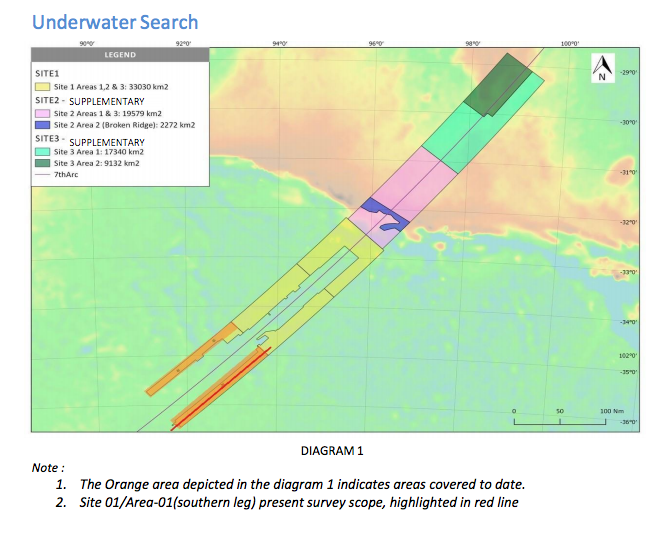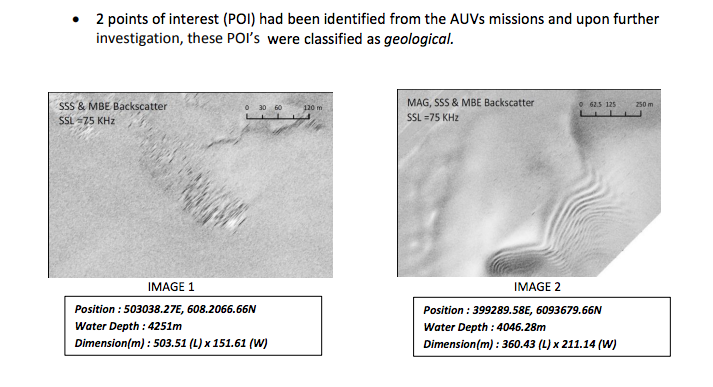A ship searching for missing Malaysia Airlines flight MH370 has piqued the curiosity of aviation watchers after it switched off its Automatic Identification System (AIS) for more than three days - without explanation.
Texas-based exploration company Ocean Infinity’s vessel named Seabed Constructor began a 90-day mission of scouring the ocean from a remote spot in the Southern Indian Ocean on 22 January, in a bid to solve one of the world’s greatest aviation mysteries.
The Beijing-bound Boeing 777 disappeared from radar with all 239 souls on board on 8 March 2014, an hour into its departure from Kuala Lumpur.

The Malaysian government has agreed to pay the company up to $70m on a “no find no fee” basis if it locates the plane within the allotted time.
But last Thursday, just 10 days into the search, the Seabed Constructor’s AIS “went dark”, reconnecting almost 80 hours later outside the search area and on its way to a scheduled refuelling stop at the Australian port of Fremantle on 8 February.
A Malaysian Government weekly search report dated 30 January stated the vessel had completed phase 1 of the search, equivalent to 4,500 square kilometres, noting “no significant contacts identified to date.”
A 6 February report listed the total area covered as 7,500 sq km, noting two “points of interest”, though they were later classified as “geological”, believed to be rock formations.
No explanation for the AIS disconnection was given and nor has Ocean Infinity commented on the matter.
Naturally, both experts and amateurs have offered their theories as to why the outage occurred.


Writing on Reddit, space scientist Richard E Cole said: “I think that the AIS transmission from Constructor has been disabled. The question is whether this is finger-trouble by someone adjusting the AIS system settings ahead of departing for Fremantle, or deliberate action.”
On his blog, he later mused: “It seems clear that the ship is checking out contacts (i.e. points of interest) in the areas they have scanned.
“It seems possible that Ocean Infinity will decide to keep the AIS transmitter off for all future operations in the search area, while re-enabling it for transitions to and from Perth. There is so little ship traffic in the area that the decision could be defended on safety grounds, it seems to me.”
Mike Chillit, an author who has written about the disappearance of MH370, tweeted a map which inferred the Seabed Constructor may have turned off its AIS to inspect the shipwreck of Peruvian-built transport ship the SV Inca, that went missing more than 100 years ago. Indeed in January last year, the same wreck was identified by an underwater drone during an earlier search for the missing plane.
Chillit’s map included the note: “Sailing time from where AIS was stopped to the location of the Peruvian Shipwreck is 18 hours at 13 knots. AIS was off for 78 hours. Leaving 42 hours for bacon, eggs, fresh OJ and some gold-digging,” leaving some Twitter users wondering if the ship had taken a somewhat improbable detour to hunt for buried treasure.
Precision machinist Kevin Rupp, who has been publicly tracking the ship, dismissed the sunken treasure theories and described Chillit’s posting as “completely fabricated” and “baloney.”
Writing on the Facebook group MH370 News and Information, he said: “One scenario for the AIS is that it was turned off because Seabed Constructor was looking at possible targets in areas that were already searched. Another is that they don’t wish to be tracked anymore for whatever reason.
“She is coming from an area that was already scanned except for a small bit. She turned her AIS off while examining the area which was previously scanned. There must have been something of great interest there.”
Speaking to the Guardian, he added: “I believe they may have turned the AIS transmitter to low power mode to prevent us from speculating that they had found something and causing undue distress for the next of kin.”
Pilot Mike Exner echoed that sentiment, tweeting: “The AIS transmitter was turned off for privacy. It was not a malfunction. Privacy does not necessarily imply something was detected. We need to be patient and see what happens without speculation.”
Amidst the theories, Air Investigation urged the company: “Whatever strategy you have now, Ocean Infinity, wrong one. Request your vessel Seabed Constructor turn on its AIS… Otherwise you create a vacuum quickly filled by idiots/ speculation.”
Seabed Constructor has 65 crew, including two government representatives from the Malaysian navy, and carries eight “autonomous underwater vehicles” or submersible craft, that will scour the seabed with scanning equipment for information to be sent back for analysis.
The submersibles can search a wide area of sea floor much faster than the tethered scanners used in previous searches, Charitha Pattiaratchi, professor of coastal oceanography at the University of Western Australia, said.
“If they don’t find anything in the 90 days ... I think that would be the end for decades - this is like the final effort, if you like,” he said.
It could complete the search within three or four weeks, covering up to 60,000 sq km in 90 days, or four times faster than earlier efforts, Ocean Infinity CEO Oliver Plunkett said.
Investigators believe someone may have deliberately switched off MH370′s transponder before diverting it over the Indian Ocean. Debris has been collected from Indian Ocean islands and Africa’s east coast and at least three pieces have been confirmed as coming from the missing plane.
Australia, China and Malaysia ended a fruitless $159.38 million two-year search of a 120,000 sq km area in January last year, despite investigators urging the search be extended to a 25,000 sq km area further to the north.
